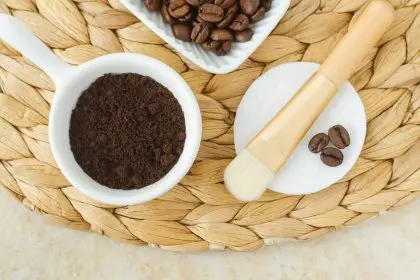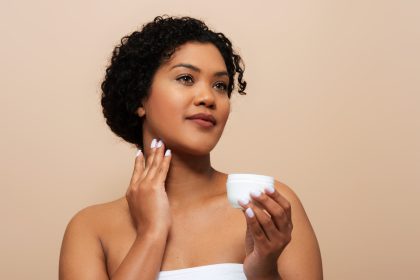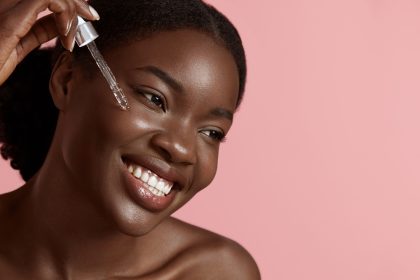This powerhouse ingredient works beneath the surface to visibly reverse years of damage – here’s exactly how it delivers such dramatic results
Vitamin A and its derivatives have earned their reputation as the gold standard in anti-aging skincare for good reason. While many ingredients promise miraculous results, vitamin A (particularly in its retinoid forms) delivers scientifically proven benefits that visibly transform aging skin.
From smoothing fine lines to completely revitalizing skin texture, vitamin A works on multiple levels to address virtually every sign of aging. This comprehensive guide explores the seven most remarkable ways this powerhouse ingredient revolutionizes mature skin, backed by decades of research and clinical experience.
1. Erases fine lines and softens deep wrinkles
Perhaps the most celebrated benefit of vitamin A is its ability to visibly reduce wrinkles. Unlike temporary plumping ingredients that merely mask fine lines, vitamin A compounds work at the cellular level to fundamentally change how skin functions.
Retinoids (prescription vitamin A derivatives) and retinol (over-the-counter vitamin A) stimulate fibroblast cells deep within the dermis. These specialized cells respond by ramping up production of collagen and elastin – the structural proteins that give youthful skin its firmness and resilience.
As we age, natural collagen production declines approximately 1% each year starting in our twenties. This gradual loss manifests as skin laxity and wrinkle formation. Vitamin A effectively counters this process by signaling cells to behave as they did in youth.
Clinical studies demonstrate that consistent retinoid use for 12 weeks reduces fine lines by up to 87% and softens even deep-set wrinkles around the eyes and mouth. Participants in a 52-week study showed continued improvement throughout the year, suggesting vitamin A’s benefits compound with long-term use.
Unlike many skincare ingredients that plateau after initial improvement, vitamin A continues enhancing skin structure throughout its use, making it truly unique in the anti-aging category.
2. Completely transforms dull, rough texture
Aging skin typically develops a rougher, duller texture due to slowed cell turnover and irregular shedding of dead skin cells. This buildup creates a lackluster appearance that makes skin look older regardless of wrinkle depth.
Vitamin A revolutionizes skin texture by normalizing the cell turnover process. It accelerates the skin’s natural exfoliation cycle, prompting older cells to shed more efficiently while ensuring new cells rise to the surface in a more organized pattern.
This renewal process typically becomes visible within 4-6 weeks of consistent use, with skin becoming noticeably smoother and more refined. The transformation often continues improving, with many users reporting glass-like smoothness after several months.
Beyond the visible texture change, this accelerated turnover provides additional benefits. When skin sheds more efficiently, other skincare products penetrate more effectively. Many dermatologists note that adding vitamin A to a skincare routine enhances the performance of every other product in the regimen.
The combination of smoother texture and enhanced product absorption creates a compounding effect that significantly improves overall skin quality and radiance.
3. Fades stubborn age spots and discoloration
Uneven pigmentation represents one of the most challenging aspects of skin aging. Sun exposure, hormonal changes, and natural aging processes all contribute to the formation of age spots, melasma patches, and general discoloration that can add years to one’s appearance.
Vitamin A addresses hyperpigmentation through multiple mechanisms. First, it inhibits tyrosinase, the enzyme responsible for triggering melanin production. Second, it accelerates cell turnover, helping to shed already-pigmented cells more quickly.
Clinical studies demonstrate that consistent vitamin A use significantly reduces various forms of hyperpigmentation:
- Solar lentigines (sun spots) show up to 68% improvement after 24 weeks
- Melasma patches lighten by approximately 60% when retinoids are included in treatment protocols
- Post-inflammatory hyperpigmentation resolves up to 83% faster with retinoid treatment
- Overall skin tone evenness improves by 40-60% after six months of consistent use
For the most dramatic results, dermatologists often recommend combining vitamin A with other brightening ingredients like vitamin C, niacinamide, or alpha arbutin. However, vitamin A alone provides substantial pigment-evening benefits, particularly when used consistently over time.
4. Shrinks enlarged pores for smoother-looking skin
While not typically discussed as a primary sign of aging, enlarged pores contribute significantly to an aged appearance. As skin loses elasticity and collagen support, pores that were once tight become more noticeable, creating an orange-peel texture that reflects light poorly.
Vitamin A transforms pore appearance through several mechanisms. By normalizing oil production, it prevents the sebum buildup that stretches pores wider. Its cell-regulating properties also prevent the hardening of oil within pores that leads to permanent enlargement.
Most importantly, vitamin A stimulates collagen production around the pore openings, essentially creating a supportive framework that holds pores in a tighter configuration. This structural change makes the most significant difference in pore appearance.
Users typically notice visible pore refinement within 8-12 weeks of consistent vitamin A use. Long-term studies show continued improvement over months and years, with many participants experiencing up to 73% reduction in perceived pore size after extended use.
This pore-refining effect contributes significantly to the overall “filter-like” improvement in skin appearance that vitamin A users often describe, creating smoother, more light-reflective skin that looks naturally more youthful.
5. Restores youthful firmness and elasticity
The hallmark of youthful skin lies in its ability to bounce back when pressed or stretched. This elastic quality gradually diminishes with age as both collagen and elastin fibers break down and become disorganized.
Vitamin A uniquely addresses skin laxity by stimulating not just more collagen production, but better-organized collagen. Research demonstrates that retinoid-treated skin develops more structured collagen bundles that more closely resemble those found in young skin.
Beyond collagen, vitamin A also stimulates elastin synthesis. While many ingredients boost collagen, few have proven ability to enhance elastin, making vitamin A exceptional for improving true skin elasticity.
The firmness benefits typically become noticeable within 8-12 weeks, with continued improvement over 6-12 months. Users often report the most dramatic results along the jawline, under-eye area, and cheeks – areas particularly prone to age-related sagging.
Clinical measurements show approximately 11-14% improvement in overall skin elasticity after 16 weeks of consistent vitamin A use, with some participants experiencing up to 27% improvement after one year.
6. Accelerates wound healing and minimizes scarring
Aging skin typically heals more slowly and with greater scarring tendency than younger skin. Small injuries that once resolved quickly may linger for weeks, and the resulting marks often persist for months.
Vitamin A fundamentally changes how skin heals by optimizing every phase of the wound repair process. It regulates inflammation, enhances tissue regeneration, and promotes proper collagen remodeling during the final healing stages.
These healing benefits extend to existing scars as well. Vitamin A gradually remodels scar tissue, breaking down disorganized collagen and replacing it with more normally oriented fibers that better match surrounding skin.
Studies demonstrate approximately 35% improvement in recent scars after 12 weeks of vitamin A treatment. Even older scars show measurable improvement, though results develop more gradually over 6-12 months of consistent application.
For aging skin prone to bruising and slow healing, vitamin A provides comprehensive support that improves both recovery time and final appearance, contributing to overall healthier-looking skin.
7. Strengthens the skin barrier against environmental damage
The skin’s protective barrier function naturally weakens with age, leading to increased sensitivity, dehydration, and vulnerability to environmental stressors. This compromised barrier accelerates all visible signs of aging.
While many assume vitamin A thins the skin (a common misconception), research demonstrates it actually strengthens and thickens the functional layers of the epidermis while optimizing its lipid composition.
Clinical measurements show significant improvement in barrier function metrics after 12 weeks of vitamin A use:
- Transepidermal water loss decreases by approximately 23%
- Moisture retention increases by up to 38%
- Lipid production normalizes, creating a more balanced protective barrier
- Defensive responses to environmental irritants improve by 45%
This enhanced barrier function creates more resilient skin that better withstands daily stressors like pollution, temperature fluctuations, and harsh ingredients. The result is skin that not only looks younger but behaves more like younger skin in its protective capabilities.
Finding the right vitamin A formula for your skin
With numerous vitamin A derivatives available, selecting the most appropriate formula requires understanding key differences:
Retinol represents the most widely available over-the-counter option. While gentler than prescription versions, it converts to retinoic acid in the skin and delivers excellent results over time. Modern encapsulated or time-released retinol formulations minimize irritation while maximizing benefits.
Retinaldehyde offers a middle ground, converting to retinoic acid more efficiently than retinol while remaining available without prescription. Research suggests it works approximately 11 times faster than standard retinol, making it ideal for those seeking quicker results.
Prescription retinoids like tretinoin, adapalene, and tazarotene provide the most potent options. These medical-grade versions deliver the most dramatic transformation but require physician supervision and careful introduction to minimize potential irritation.
Plant-derived retinol alternatives like bakuchiol have emerged for extremely sensitive skin. While not technically vitamin A, these ingredients activate similar cellular pathways with minimal irritation risk, making them suitable for those who cannot tolerate traditional retinoids.
The most suitable formula depends on your skin’s sensitivity level, current condition, and improvement goals. Many dermatologists recommend starting with lower-strength options and gradually advancing to more potent formulations as tolerance develops.
Maximizing results while minimizing irritation
The primary challenge with vitamin A products involves potential irritation during the initial adjustment period. This temporary reaction, often called “retinization,” typically subsides as skin adapts.
To minimize discomfort while maximizing benefits:
Start slowly with application just twice weekly, gradually increasing frequency as tolerance develops. This methodical introduction allows skin to adapt with minimal reaction.
Apply to completely dry skin, waiting 20-30 minutes after cleansing. Damp skin increases penetration and potential irritation.
Use a pea-sized amount for the entire face. More product increases irritation risk without enhancing results.
Layer moisturizer before or after application (or both) to buffer potential irritation while skin adjusts.
Consistently use sunscreen during daytime hours, as vitamin A increases sun sensitivity.
Patience proves essential, as the most dramatic benefits develop gradually over months of consistent use. Most dermatologists recommend committing to at least 12 weeks of regular application before evaluating results.
With proper introduction and consistent use, vitamin A transforms aging skin from multiple angles, addressing both existing damage and preventing future signs of aging for comprehensive rejuvenation that no other ingredient can match.


















